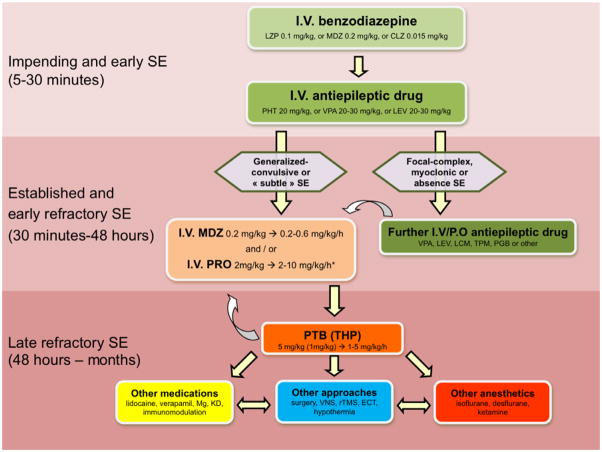Figure 1.
Flow chart of status epilepticus treatment*. Increasing refractoriness is illustrated by the background color intensity; the non-sedating agents are green, anesthetics in orange to red, and other options in yellow or white. First-line treatment is light green, second-line darker green, and third line light and darker orange. Other options are given in red, yellow and blue.
*Great caution is required for valproate in children under 2 years (hepatic toxicity), and propofol in young children (propofol infusion syndrome). In this setting, benzodiazepines, phenytoin and barbiturates represent the most widely used options.
CLZ: clonazepam; ECT: electroconvulsive treatment; KD: ketogenic diet; LCM: lacosamide; LEV: levetiracetam; LZP: lorazepam; MDZ: midazolam; PGB: pregabaline; PHT: phenytoin; PRO: propofol; PTB: pentobarbital; rTMS: repetitive transcranial magnetic stimulation; SE: status epilepticus; THP: thiopental; TPM: topiramate; VNS: vagus nerve stimulation; VPA: valproate.

